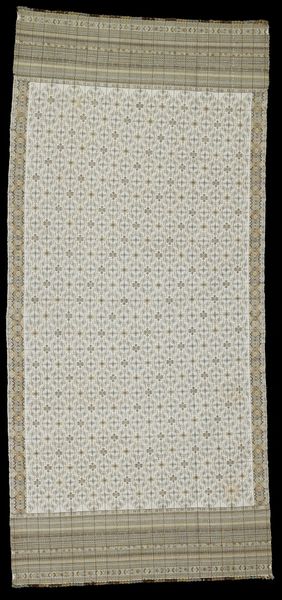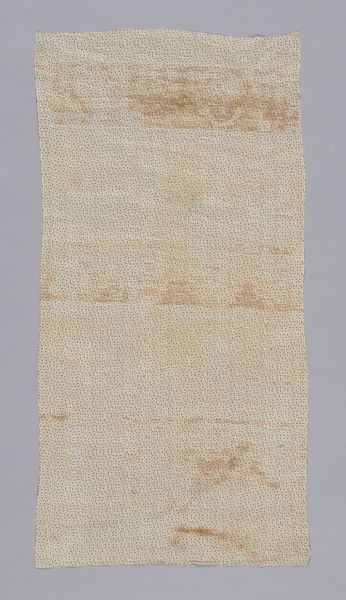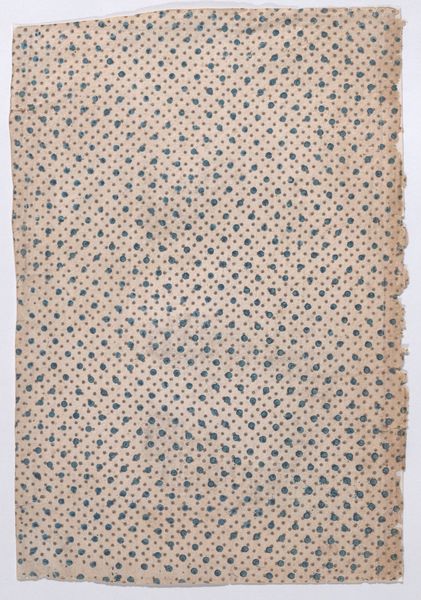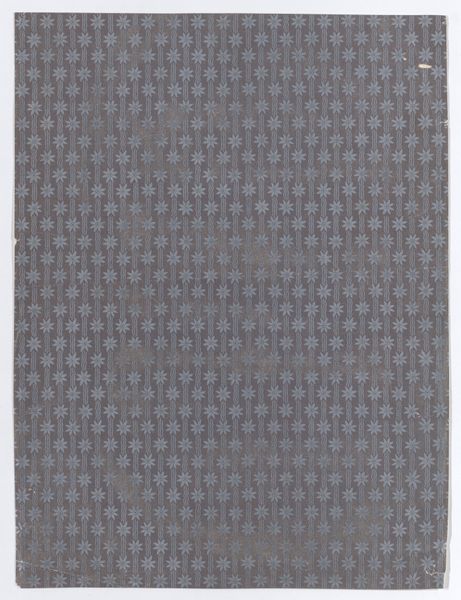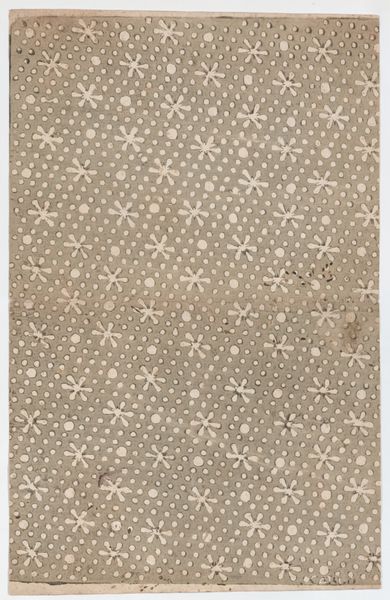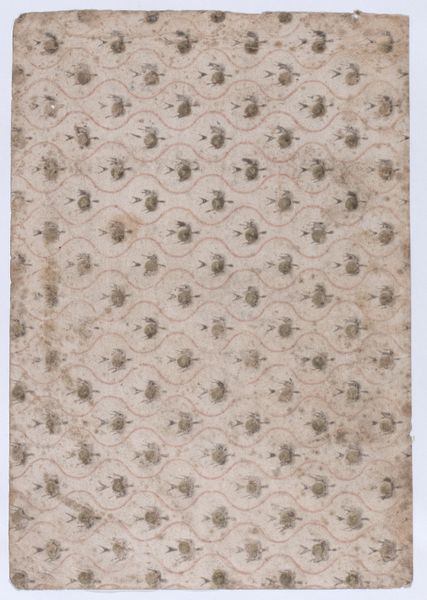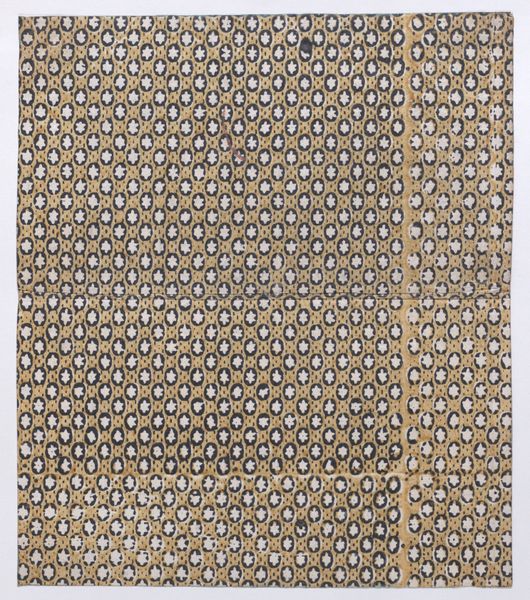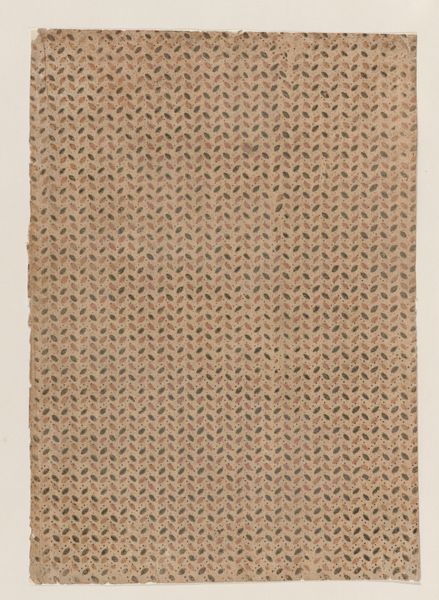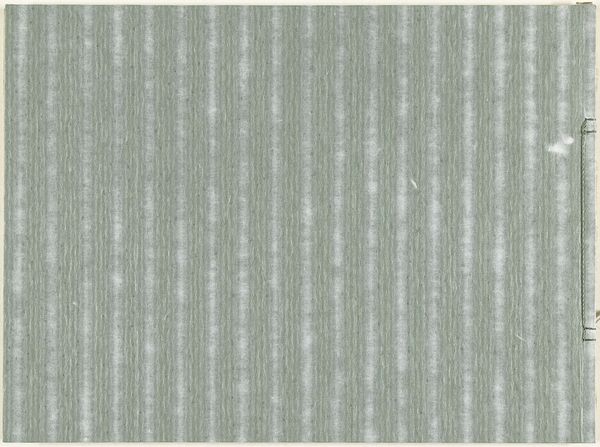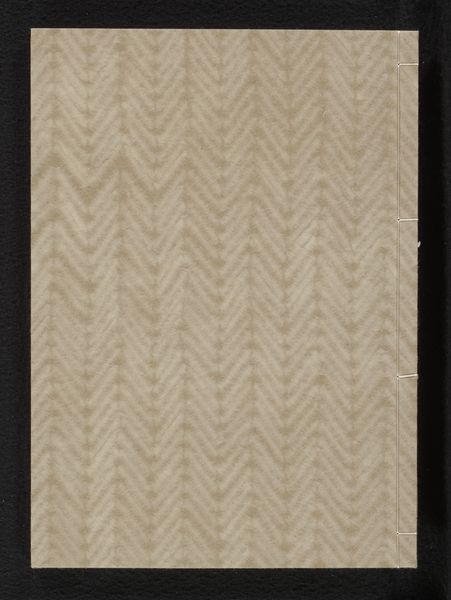
weaving, textile
#
art-nouveau
#
weaving
#
textile
#
modernism
Dimensions: 200.1 × 125.4 cm (78 3/4 × 49 3/8 in.) Repeat: 57.5 × 30.4 cm (22 5/8 × 12 in.)
Copyright: Public Domain
Curator: Here we have Koloman Moser's "Hafis," a textile design from 1899. It resides right here at The Art Institute of Chicago. Editor: It's so quiet, almost ghostly. A delicate dance of repetitive forms, barely there. It’s more of a feeling than a pattern at first glance, like faded memory. Curator: Precisely! Moser was a leading figure in the Vienna Secession, striving to bring art into everyday life. This fabric sample hints at that very ideal. Woven material made available for anyone with the means for personal tailoring, interiors… Imagine this in a fashionable salon! Editor: Except salons were all about ostentation! And "Hafis" reads more like a prototype—a testament to material potential, more than some gilded showcase of consumption. This would have been woven. What kind of labor did that represent? Was this even widely distributed, or remain more experimental in practice? Curator: That's the thing about Art Nouveau, though, isn't it? This constant tension between luxury and accessibility. The flowing lines, the natural motifs rendered with such restraint, designed to bring beauty to the masses, if the masses can afford it! Editor: Yes, but restrained motifs meant simplifying manufacturing. The promise of machine-made art. Moser designing for capital instead of nature… but let's get back to these figures. What are they? Demonic moths? Owls in drag? They remind me a bit of stylized, grinning faces. Curator: Moths or owls! I love that! I’ve always felt they were stylized flowers. They speak to the overall ambition: Art Nouveau’s celebration of the natural world—or rather, it’s stylization through repetition! Still, this constant repeating "natural form" makes it quite strange and otherworldly. Editor: Or perhaps they reflect the artificiality of bringing nature into the manufactured realm. It seems this period wrestled quite seriously with "authenticity." Curator: Right, so this ghostly material becomes something of a memento mori… Ha! To craft! I really love how this seemingly innocuous little scrap holds so much! Editor: For me, it highlights the tensions between art and industrial design—commodification through beauty and a reflection on our manufactured landscapes!
Comments
No comments
Be the first to comment and join the conversation on the ultimate creative platform.

